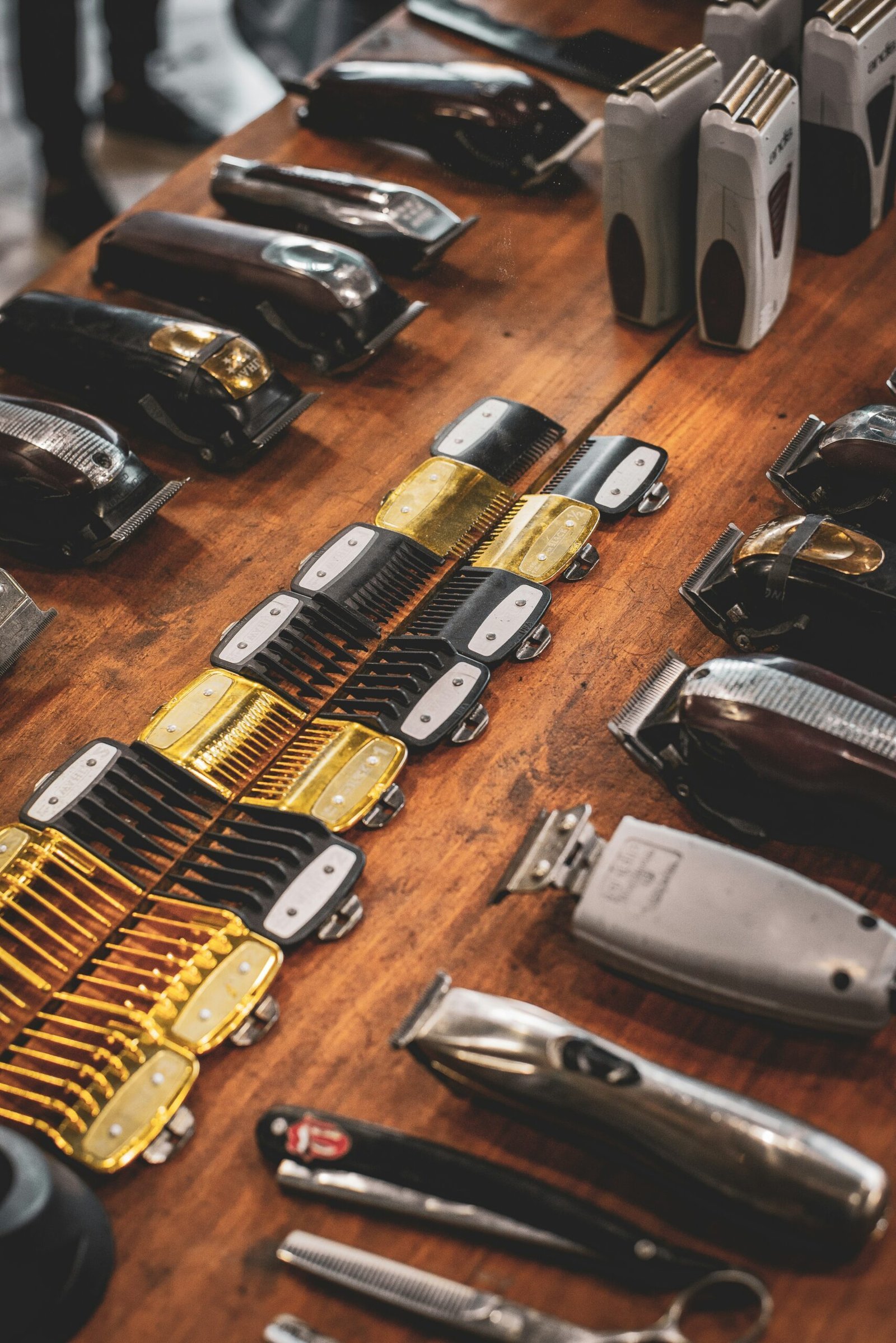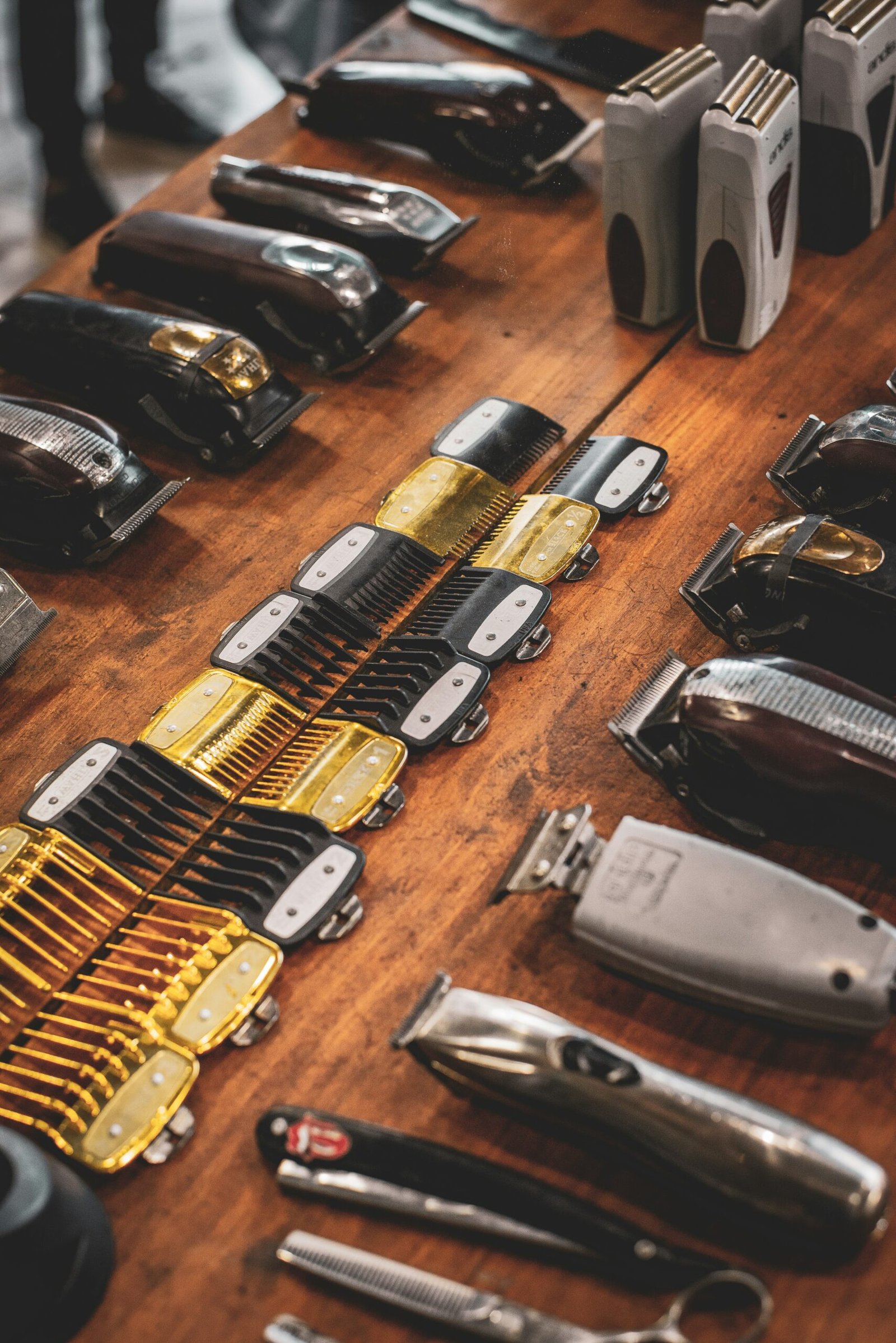
Introduction to Hair Clippers
Hair clippers have become an indispensable tool in both professional barbering and home grooming, offering precision and convenience that traditional scissors simply cannot match. These devices are designed to easily cut through hair, providing a consistent and even trim. The history of hair clippers dates back to the 19th century when manual clippers were first invented. These early models required significant manual effort, but they revolutionized the grooming industry by offering a more efficient way to cut hair. The evolution of hair clippers has been marked by significant technological advancements, making them more user-friendly and effective.
In the mid-20th century, the introduction of electric hair clippers further transformed the landscape of personal grooming. These electric versions made the process faster and less labor-intensive, allowing barbers to serve more clients in less time. Over the years, hair clippers have continued to evolve, incorporating features such as adjustable blades, ergonomic designs, and various attachments to cater to different hair types and styles. Modern hair clippers are equipped with powerful motors and rechargeable batteries, making them an essential tool for both professional barbers and individuals who prefer to groom at home.
The importance of hair clippers in personal grooming cannot be overstated. They offer a level of precision that is difficult to achieve with scissors, enabling users to maintain their desired hairstyle with ease. Whether you are a professional barber or someone who prefers to cut your own hair at home, understanding the different types of hair clippers and their functionalities can significantly enhance your grooming routine. As we delve deeper into this ultimate guide to hair clippers, you will gain a comprehensive understanding of their features, benefits, and how to choose the right one for your needs.
Types of Hair Clippers
When it comes to selecting the ideal hair clipper, understanding the various types available is crucial. Hair clippers can be broadly categorized into corded and cordless models, each with distinct advantages and limitations. Additionally, the internal motor mechanism significantly influences the clipper’s performance, with rotary, magnetic, and pivot motors being the primary types in the market.
Corded vs. Cordless Clippers: Corded clippers are known for their consistent power output, making them suitable for prolonged use without the worry of battery depletion. They are often favored by professionals who require reliable performance for extended periods. However, the presence of a cord can limit mobility and maneuverability. On the other hand, cordless clippers offer greater flexibility and freedom of movement, making them ideal for home use or travel. Modern cordless models come with advanced batteries that provide substantial run-time, though they may occasionally require recharging during long grooming sessions.
Rotary Motor Clippers: Rotary motor clippers are highly versatile and powerful, capable of handling various hair types and thicknesses. They are often the preferred choice for professional barbers due to their durability and ability to maintain consistent cutting speed. These clippers tend to be more expensive but are worth the investment for those seeking robust performance and longevity.
Magnetic Motor Clippers: Magnetic motor clippers are known for their simplicity and efficiency. They offer a high-speed cutting action, making them suitable for quick trims. These clippers are generally more affordable and require minimal maintenance. However, they might struggle with thicker hair types, making them less ideal for heavy-duty use.
Pivot Motor Clippers: Pivot motor clippers provide a balance between speed and power. They are designed to cut through both wet and dry hair with ease, making them versatile for different grooming needs. Pivot motor clippers tend to be quieter and more reliable; however, they may not deliver the same speed as magnetic motor clippers, which can be a consideration for users prioritizing quick trims.
Understanding the different types of hair clippers and their specific advantages and disadvantages can significantly aid in making an informed decision. Whether prioritizing power, versatility, or convenience, there is a hair clipper model tailored to meet individual needs.
Key Features to Look for in Hair Clippers
When selecting hair clippers, understanding the key features is vital to ensuring a wise investment. One of the foremost considerations should be the quality of the blades. High-quality blades, often made from stainless steel or ceramic, provide a sharp and consistent cut, reducing the risk of hair pulling or uneven trimming. Additionally, self-sharpening blades require less maintenance and remain efficient over prolonged use.
Motor power is another critical factor. Clippers with powerful motors can handle various hair types and thicknesses, ensuring a smooth, uninterrupted cutting experience. Look for units with rotary motors, as they tend to offer a balance between power and durability. A strong motor also reduces the likelihood of the clippers overheating during extended use.
Battery life plays a significant role, especially for cordless models. Opt for clippers that offer at least 60 minutes of runtime on a full charge. Some advanced models even come with quick-charge features, allowing for a few minutes of charging to provide enough power for a complete haircut. It’s also beneficial to consider clippers with dual power options, enabling usage both corded and cordless.
Ergonomic design is essential for comfort and ease of use. Clippers with a well-balanced weight and a comfortable grip reduce hand fatigue and allow for more precise control. Look for features such as a non-slip handle and a compact design that fits comfortably in your hand.
Lastly, the availability of additional accessories can enhance the versatility of your clippers. Combs and guards of varying lengths allow for different hair cutting styles and lengths. Other useful accessories may include blade oil, cleaning brushes, and protective cases. These additions can significantly extend the life and functionality of your clippers, making them a valuable addition to your grooming toolkit.
Top Brands and Models
When it comes to hair clippers, a few brands have established themselves as leaders in the market due to their consistent quality, innovation, and reliability. Among these, Wahl, Oster, Andis, and Philips stand out as top choices for both professionals and home users. Each brand offers a range of models designed to meet various grooming needs, from basic trims to intricate styling.
Wahl is renowned for its durable and high-performance hair clippers. The Wahl Professional 5-Star Magic Clip is particularly popular among barbers for its precision and powerful rotary motor. The cordless design provides flexibility, while the stagger-tooth blade ensures smooth, seamless cuts. Additionally, the Wahl Elite Pro is a favorite for home use, offering a complete kit with a powerful motor and self-sharpening blades.
Oster is another brand synonymous with quality and durability. The Oster Classic 76 is an industry staple, known for its robust construction and powerful motor that can handle heavy-duty cutting tasks. Its detachable blades make it easy to switch between different cutting lengths, making it a versatile tool for barbers. For a more modern option, the Oster Fast Feed is a quieter, adjustable clipper that delivers excellent performance with a sleek design.
Andis has made a name for itself with a focus on innovation and versatility. The Andis Master is a top choice among professionals, featuring a powerful magnetic motor and adjustable blade for precision cutting. The lightweight aluminum housing ensures durability without sacrificing comfort. For those looking for a cordless option, the Andis Supra ZR II offers a lithium-ion battery that delivers extended runtime and a detachable blade system for easy maintenance.
Philips caters to a broader audience with its user-friendly and technologically advanced hair clippers. The Philips Norelco series, such as the 9000 Prestige, offers a sleek design with self-sharpening blades and adjustable combs for effortless grooming. The DualCut technology ensures faster and sharper cuts, making it a reliable choice for home users seeking professional results.
By understanding the strengths and features of these top brands and models, consumers can make informed decisions when selecting the right hair clipper for their needs. Whether for professional use or personal grooming, Wahl, Oster, Andis, and Philips offer reliable options that stand out in the market.
Proper Maintenance and Care
Maintaining and caring for your hair clippers is essential to ensure their longevity and optimal performance. Regular maintenance not only extends the lifespan of your clippers but also guarantees a smoother and more efficient cutting experience. Below, we outline the key aspects of proper maintenance and care for your hair clippers.
Cleaning Tips
Cleaning your hair clippers after each use is crucial. Begin by unplugging the clippers and using a small brush to remove any hair clippings from the blades and the internal components. For a more thorough clean, you can detach the blades and use a soft cloth or a brush to clean the interior parts. Rinse the detachable blades under warm water, making sure they are completely dry before reattaching them. Regular cleaning prevents the buildup of hair and debris, which can affect the clippers’ performance.
Oiling the Blades
Oiling the blades is another critical step in hair clipper maintenance. Apply a few drops of clipper oil to the blades after cleaning them. Turn the clippers on to allow the oil to distribute evenly across the blades. This lubrication reduces friction, prevents rust, and ensures smooth cutting. It is recommended to oil the blades after every use to maintain their sharpness and efficiency.
Replacing Parts
Over time, certain parts of your hair clippers may wear out and require replacement. Common parts that may need replacing include the blades, blade drive assembly, and guards. Regularly inspect these components for signs of wear and tear. Replacing worn-out parts promptly ensures that your clippers continue to perform at their best and prevents potential damage to other components.
Proper Storage
Proper storage of your hair clippers is also vital for their maintenance. Store your clippers in a clean, dry place, preferably in a protective case or pouch. Avoid leaving them in damp or dusty environments, as this can lead to rust and other damage. Ensuring that the power cord is neatly coiled and not tangled can also prevent unnecessary wear on the cord.
In conclusion, regular cleaning, oiling, replacing worn parts, and proper storage are all crucial steps in maintaining your hair clippers. By following these practices, you can ensure that your clippers remain in excellent condition, providing you with reliable and efficient performance for years to come.
Using hair clippers at home can be a convenient and cost-effective way to maintain your hairstyle or help family members with theirs. However, to achieve professional-looking results, it’s essential to use the right techniques and avoid common pitfalls. Here are some practical tips to help you get started with home haircuts using hair clippers.
Firstly, ensure your hair clippers are clean and well-maintained before use. A clean clipper not only works more efficiently but also reduces the risk of infection or skin irritation. Regularly oiling the blades and checking for any damage or dullness will keep your clippers in optimal condition.
Before starting the haircut, decide on the desired length and style. Attach the appropriate guard comb to the clipper to control the cutting length. For beginners, it’s advisable to start with a longer guard comb and gradually move to shorter ones if needed. This approach minimizes the risk of cutting too much hair at once.
When cutting hair, work in small sections and move the clippers against the direction of hair growth for an even cut. Use a steady hand and take your time, especially around delicate areas such as the ears and neckline. Holding the clipper at a slight angle can help achieve a cleaner cut and better blending.
For more intricate hairstyles or fades, it’s beneficial to use different guard sizes to create a gradual transition between lengths. Begin with the longest guard and progressively use shorter guards to blend the hair seamlessly. Combining clipper cutting with scissor trimming can also enhance the final result, particularly for detailing and texturizing.
Common mistakes to avoid include rushing the process, not maintaining consistent pressure, and neglecting the final touch-ups. Thoroughly check the haircut from various angles to ensure an even finish and make any necessary adjustments. Patience and practice are key to mastering the use of hair clippers at home.
By following these tips, you can feel more confident in your ability to give yourself or your family members a professional-looking haircut. With time, you’ll become more skilled and efficient, making home haircuts a regular and enjoyable routine.
Safety Precautions
When using hair clippers, safety should always be a top priority to prevent accidents and ensure a smooth grooming experience. Proper handling of the device is essential. Always hold the clippers firmly but comfortably, ensuring that your grip allows for precise control. Avoid using the clippers with wet hands to minimize the risk of electric shock, and ensure the device is turned off and unplugged when not in use or when changing attachments.
Maintaining cleanliness is equally important to avoid infections and ensure the longevity of your hair clippers. Before each use, inspect the blades for any residue or hair build-up. Clean the clippers according to the manufacturer’s instructions, typically involving brushing away hair and using a disinfectant spray or wipe. Regularly oiling the blades helps maintain their sharpness and effectiveness, reducing the risk of pulling or tugging on hair, which can cause irritation.
Proper storage of hair clippers is another critical aspect of safety. Store the clippers in a dry, cool place, away from moisture and dust. Use a protective cover or case to prevent damage to the blades and keep the clippers in optimal condition. It’s also crucial to keep hair clippers out of reach of children to prevent accidental injuries. Educate all household members on the importance of handling and storing the device safely.
By adhering to these safety precautions, you can ensure a safe and efficient grooming experience. Proper handling, regular cleaning, and mindful storage of hair clippers not only enhance their performance but also contribute to a safer environment for all users.
Frequently Asked Questions
When it comes to selecting the ideal hair clippers, many questions arise. One common query is the distinction between professional and home-use clippers. Professional clippers are typically more robust, designed for frequent use, and possess more powerful motors. They often come with a wider range of attachments and features to cater to various hair types and styles. In contrast, home-use clippers are generally more affordable and user-friendly, targeting individuals who require occasional grooming.
A frequently asked question pertains to blade maintenance. How often should you replace the blades of your hair clippers? The answer depends on the frequency of use and the quality of the blades. For regular home use, replacing the blades every six to twelve months is advisable. However, professional-grade clippers used in barbershops may require more frequent blade replacements to maintain optimal performance.
Troubleshooting common issues is another area of interest. If your clippers are pulling hair rather than cutting smoothly, it may indicate dull blades or a need for lubrication. Regular cleaning and oiling of the blades can prevent such issues. Additionally, if the clippers are overheating or making unusual noises, it might be time for a thorough inspection or professional servicing.
Choosing the right hair clipper for specific hair types can be daunting. For thick, coarse hair, clippers with powerful motors and durable blades are essential. Conversely, for fine or thin hair, lightweight clippers with adjustable settings are more suitable. It’s also beneficial to consider clippers with various comb attachments to accommodate different hair lengths and styles.
By addressing these frequently asked questions, we hope to eliminate any uncertainties you may have about hair clippers. Whether you’re a professional barber or a home user, understanding these aspects will ensure you select the best clipper to meet your needs and maintain it for long-lasting performance.


